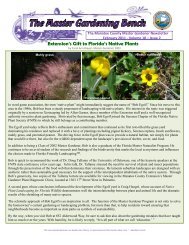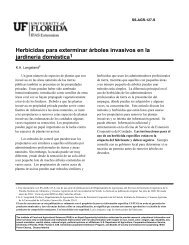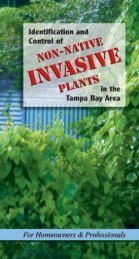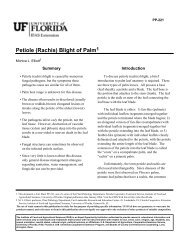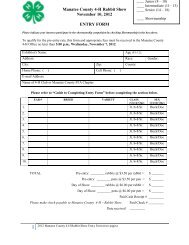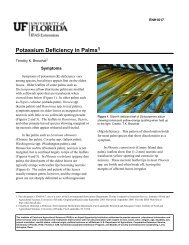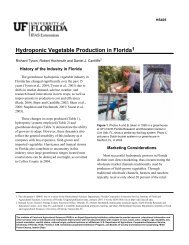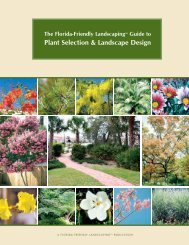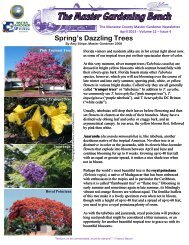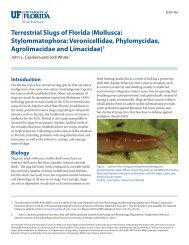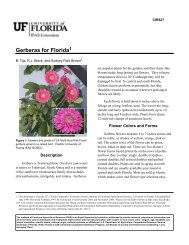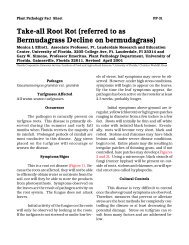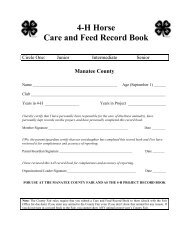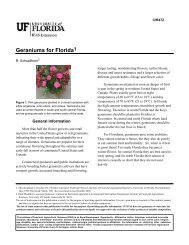Mangrove Trimming Guidelines - Manatee County Extension Office
Mangrove Trimming Guidelines - Manatee County Extension Office
Mangrove Trimming Guidelines - Manatee County Extension Office
You also want an ePaper? Increase the reach of your titles
YUMPU automatically turns print PDFs into web optimized ePapers that Google loves.
B<br />
lack mangroves (Avicennia germinans) are distinguished by leaves that are<br />
dull, dark green on the upper side and whitish green/gray underneath. The leaves<br />
aid in salt exchange, which is why they often have a salty encrustation on the<br />
underside. They also possess pencil-like roots, called pneumatophores, that grow<br />
up from the sediments (like soda straws) for several feet from the base of the tree.<br />
The pneumatophores grow off of extensive cable roots running just under the<br />
surface of the soil. The pneumatophores are similar to the prop roots of the red<br />
mangrove in that they aid in air, nutrient, and salt exchange.<br />
Black mangroves can grow to be quite tall, usually with a singe main trunk that<br />
often has a large diameter in older trees. They are useful as windbreaks during<br />
severe weather. They are most attractive when the lower branches are trimmed<br />
(windowed) and the upper canopy is left intact or thinned. Their form, color and<br />
slender leaves often allow a pleasing, and somewhat private view from waterfront<br />
homes.<br />
Black mangrove<br />
propagules are smaller<br />
than red mangrove<br />
propagules and gray.<br />
They lay stranded by the<br />
tides until the fruit wall<br />
falls from the developing<br />
seedling, as the seedling<br />
sends small roots into<br />
the substrate. Black<br />
mangroves are generally<br />
able to grow in more<br />
saline and “basin like”<br />
conditions than the other<br />
mangroves.<br />
8 F LORIDA D EPARTMENT OF E NVIRONMENTAL P ROTECTION<br />
Black <strong>Mangrove</strong>s<br />
named after their dark bark<br />
(above) Window views under black<br />
mangrove canopy<br />
(left) Leaves and fruits (propagules)<br />
of black mangrove<br />
(above) Window view through a<br />
canopy of a black mangrove<br />
(left) Pneumatophores are primary<br />
characteristics of black mangroves



